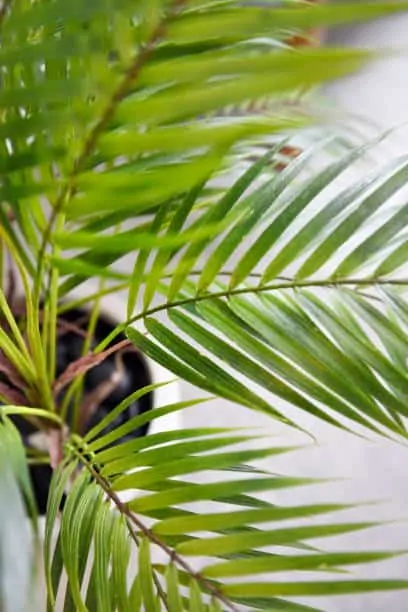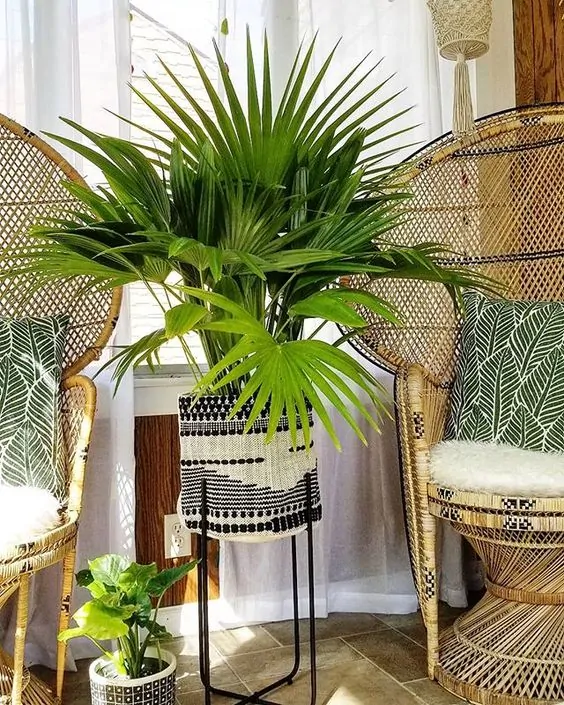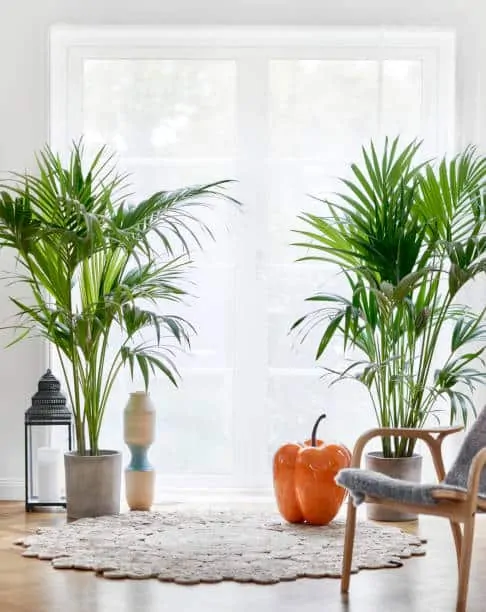Indoor Palm Trees - How To Grow This Houseplant
Have a look at this quick and easy guide on how to grow palm trees in your house!
Indoor Palm Trees: All About This Houseplant
Palm trees are large, evergreen plants that mostly grow in tropical regions. They have been adapted to all climates and imported as staple images of malls, SPAs, and famous boulevards. The sight of a palm tree in your house or office can help you relax and think yourself on a luxurious vacation!
In nature, many palm trees are full-blown trees, as tall as a house or even taller. The tallest species reach 200 feet (66 meters) tall! In a pot, they will never reach these heights, but they will grow impressively tall anyway. Many palm trees bloom in their natural habitat, but not only are the blooms overshadowed by the leaves they sport, but it is also very difficult to get a palm tree to bloom indoors.
There are many types of palm trees that can be grown indoors, and we have a handy list for you to show you the most impressive ones. Pick your favorite and take a look at this guide on how to take care of them. Keep in mind that there are some desert palm trees that require different care from the one mentioned here, so be sure to check what kind of palm you have.
Indoor Palm Trees: How To Grow Them
Water
Like most tropical plants we have talked about, indoor palm trees need well-draining soil and little water. Moisture is more important than watering the root ball as too much stagnant water can lead to root rot. Mist the leaves occasionally and only water when the top 3-4 inches of soil are dry.
Light
Palm trees prefer shady places and will do great in low light environments. This is why they go great with other plants we suggest for sprucing up a low-light corner. However, many palm trees will do great in bright indirect light as well, but be careful not to place them in full sun, as most will just burn.
Temperature
These giants do not like the cold. They thrive in indoor temperatures, as long as they are in a used room and the temperature doesn’t go below 70°F (21°C). If you have other plants in the space, you can take them as a reference. For example, a room where a Swiss cheese plant thrives will be good for a palm tree as well.
Soil
Remember that the best soil for indoor palm trees is a well draining one. Palm potting mixes are commercially available, but you can make one yourself with cactus mix and some peat moss. When buying a potting mix make sure it’s porous enough to let the plant breathe. Pick a potassium-rich soil from the start so you don’t have to worry about fertilization in the first year. Have a look at this list and see if you can find your favorite potting mix! Palm trees do well in slightly acidic soil, so it can benefit from your coffee grounds as well.
Fertilization
As I mentioned earlier, indoor palm plants like potassium. Fertilize regularly with an organic fertilizer, especially during growth season. Check the potassium content and pick a slow-release fertilizer for easier care.
Pruning
Palm trees are a little touchy when it comes to pruning. You can over-prune a palm tree by cutting away too many leaves or trying to control the height. Palm trees feed on dry, decomposing leaves, and cutting them away can do more damage than good. When they drop of their own accord, you can remove them, but no sooner. Don’t leave dry leaves on the ground and don’t mist them either, as they can be a breeding ground for pests.
The only semi-efficient way to control the height of a palm tree is to keep the pot in which it grows small enough to stunt it. Otherwise, allow the tree to grow as tall as it will. Cutting back on the top will most likely kill the tree because most palm trees grow from a single, central stem.
Indoor Palm Trees: Quick Care Guide
Water
Allow top 3-4 inches to dry before watering, mist occasionallyLight
Bright indirect light to shadeTemperature
No lower than 70°F (21°C)Soil
Slightly acidic, well-drainingDifficulty
EasyToxicity
Most are non-toxic, but check with the labelHome Decoration Tips For Indoor Palm Trees
Indoor palm trees are a great decoration for low-traffic areas of your house because they do not like their leaves touched or brushed against. They are social plants so they seem to enjoy having companions around them. You can go with smaller plants or bring in a larger one, like the ZZ plant. It will do great in the same environment as the palm tree and they will both have a plant friend to keep them company! They will reward you with rich green foliage and a relaxed atmosphere!
Another option for palm trees is to place it in the corner of your office to give it a personal touch. Pair it with other plants from this list to create a green oasis in your workspace. It is a great way to rest your eyes after long hours of staring at a computer screen and it will give your office an organized, responsible look.
Sooner or later, your palm tree will outgrow even the largest of spaces you can make available for it. In this case, it’s time to think about relocating it. Maybe you can move it from your house to your office, or from your office to the lobby. Give it the space it needs and watch it grow!
Final Thoughts
Have these tips on growing indoor palm trees been useful? I hope I convinced you that it is easy and rewarding to take care of a palm tree and that you will try! Let me know how it goes in the comment section below!








Thanks it will help me . I know now where to place and how not to over water a palm tree.
Hi Donna! Thank you for your comment! I’m happy to see that this article has been helpful for you. Happy gardening!